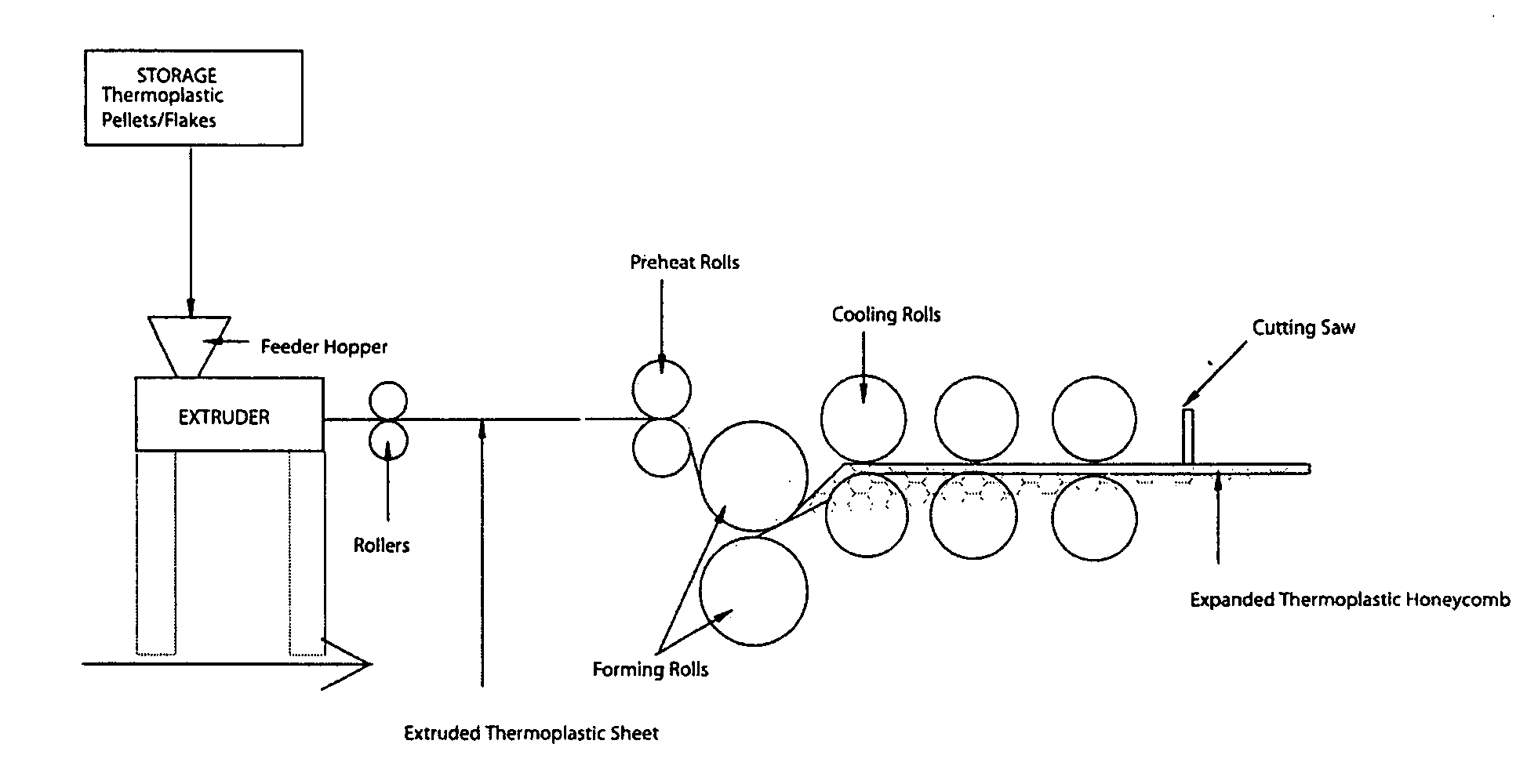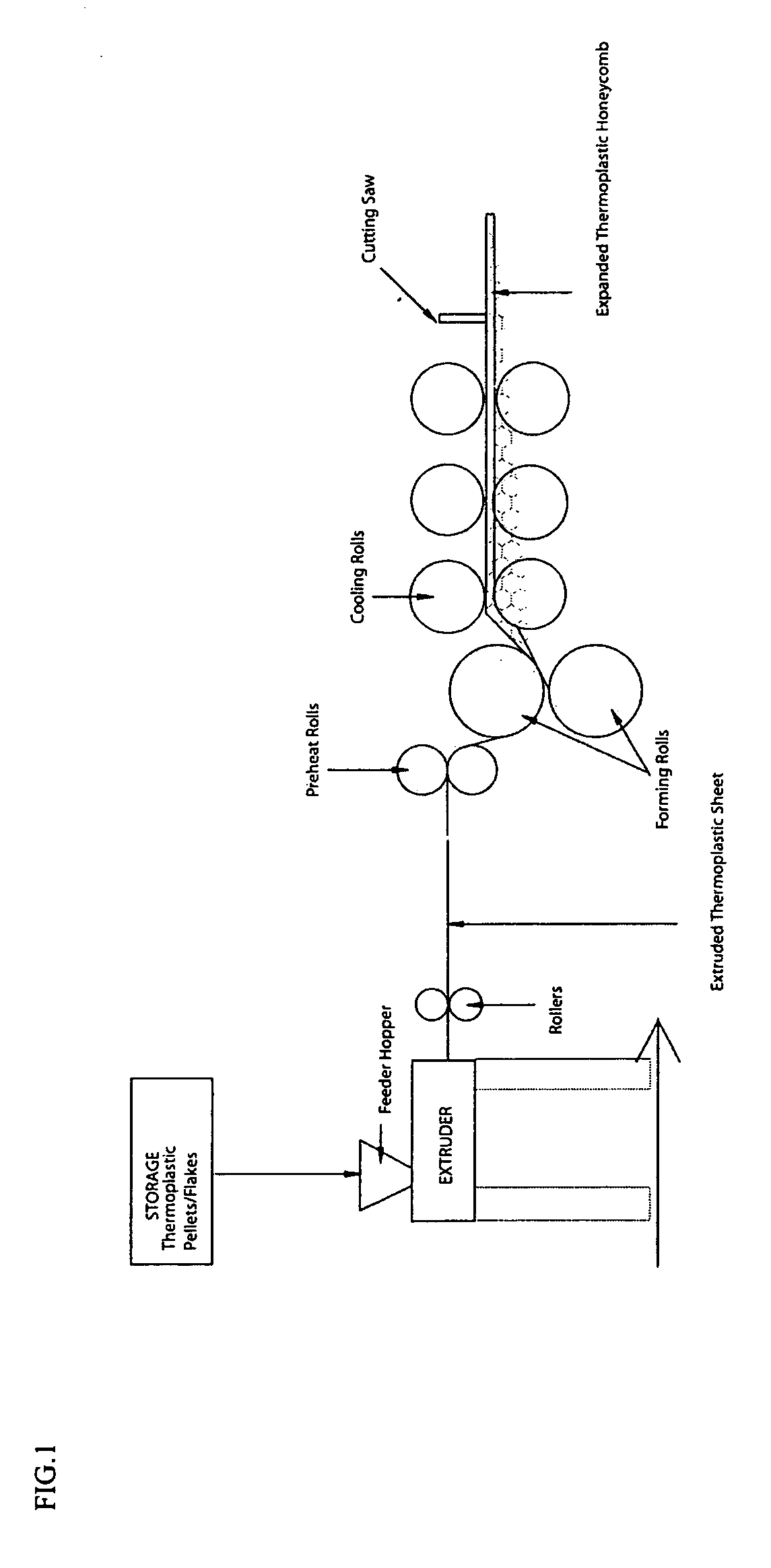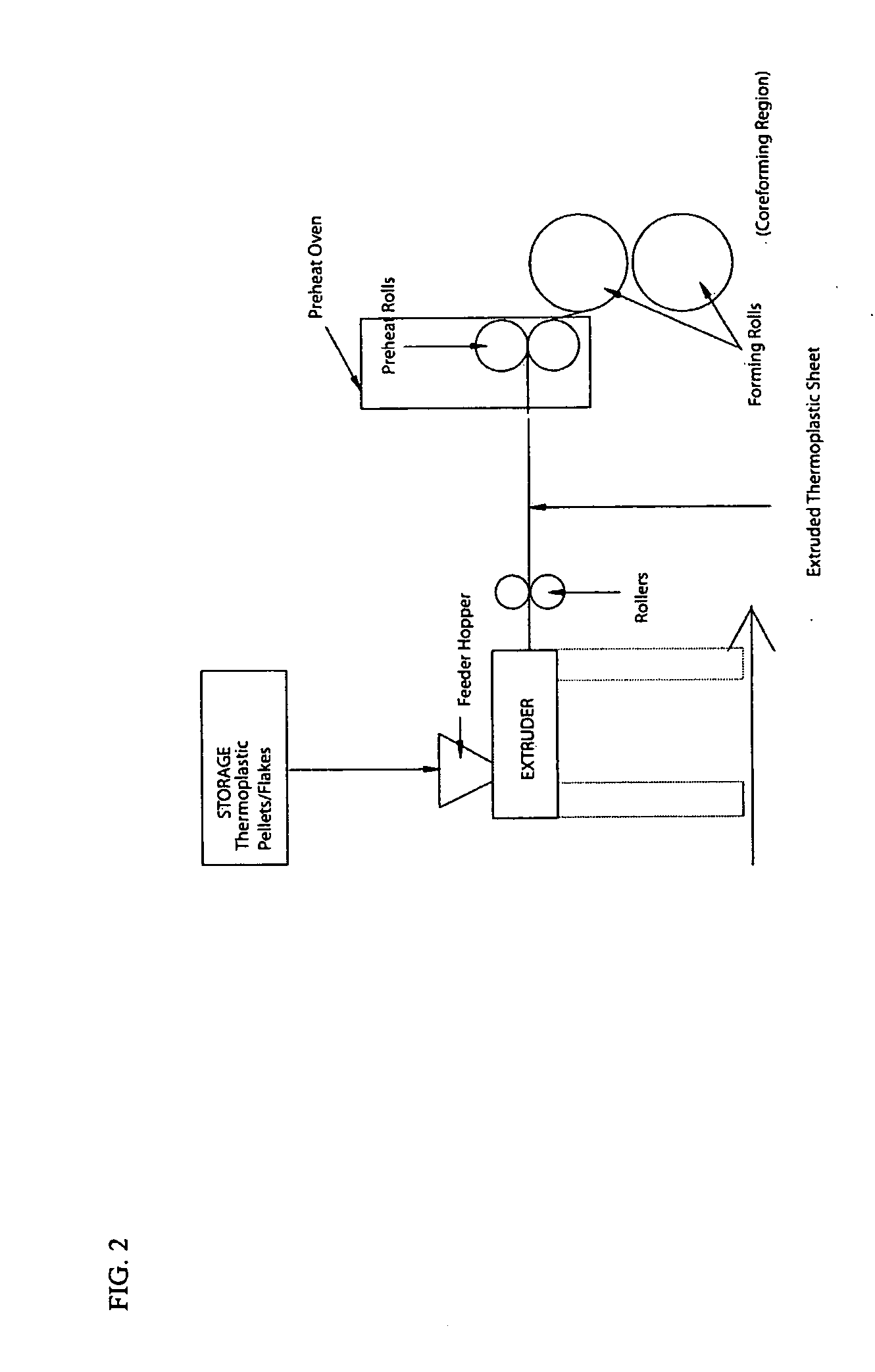Advanced method and apparatus for cost-effectively and continuously producing expanded thermoformable honeycomb materials
a technology of thermoformable honeycomb and thermoformable materials, which is applied in the field of advanced methods and apparatus for producing expanded thermoformable honeycomb materials, can solve the problems of large economic losses, substantial increase in production costs, and honeycomb destruction of sheet polish, etc., and achieves the effects of facilitating release, cost-effective and energy-saving, and maximum temperature of material
- Summary
- Abstract
- Description
- Claims
- Application Information
AI Technical Summary
Benefits of technology
Problems solved by technology
Method used
Image
Examples
Embodiment Construction
[0034] Raw material, such as flakes or pellets of thermoplastic material, is fed into the extruder by means of a conveying device or hopper. Inside the extruder, the raw material is heated to a melt temperature at which the material becomes a viscous liquid. In this state, it is forced under pressure, typically by a screw pump mechanism, through a set of dies generally in the shape of a flat, continuous sheet. The present invention can form expanded materials from a variety of extruded sheet thicknesses with 0.080 inches to 0.250 inches being typical. By the time the material has been forced through the extruder dies into sheet form, it has cooled to approximately 200-500° F. depending on the type of thermoplastic, and, while it is still soft and flexible, it is no longer in a liquid state. It is moved forward on a conveyor device into either a preheat region or a preheat / heating region. In the present invention, the raw thermoplastic material goes through only one complete heating ...
PUM
| Property | Measurement | Unit |
|---|---|---|
| temperature | aaaaa | aaaaa |
| thicknesses | aaaaa | aaaaa |
| temperatures | aaaaa | aaaaa |
Abstract
Description
Claims
Application Information
 Login to View More
Login to View More - R&D
- Intellectual Property
- Life Sciences
- Materials
- Tech Scout
- Unparalleled Data Quality
- Higher Quality Content
- 60% Fewer Hallucinations
Browse by: Latest US Patents, China's latest patents, Technical Efficacy Thesaurus, Application Domain, Technology Topic, Popular Technical Reports.
© 2025 PatSnap. All rights reserved.Legal|Privacy policy|Modern Slavery Act Transparency Statement|Sitemap|About US| Contact US: help@patsnap.com



